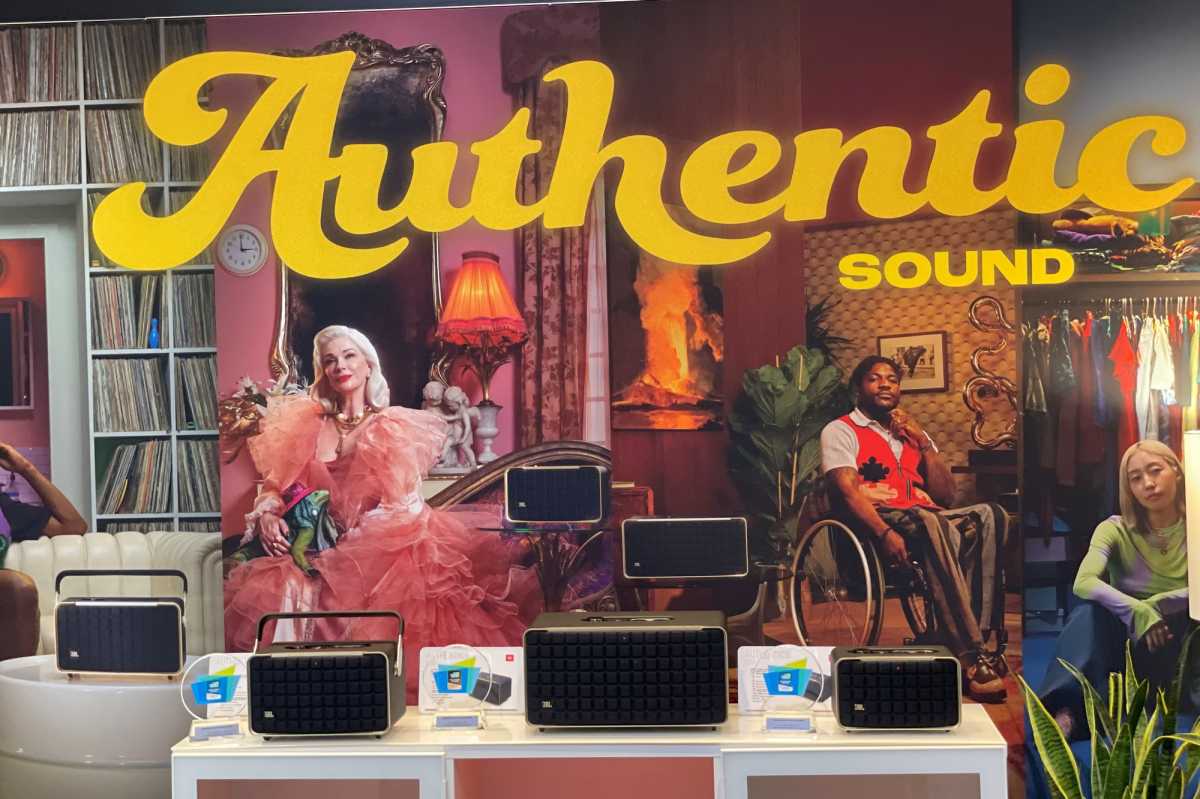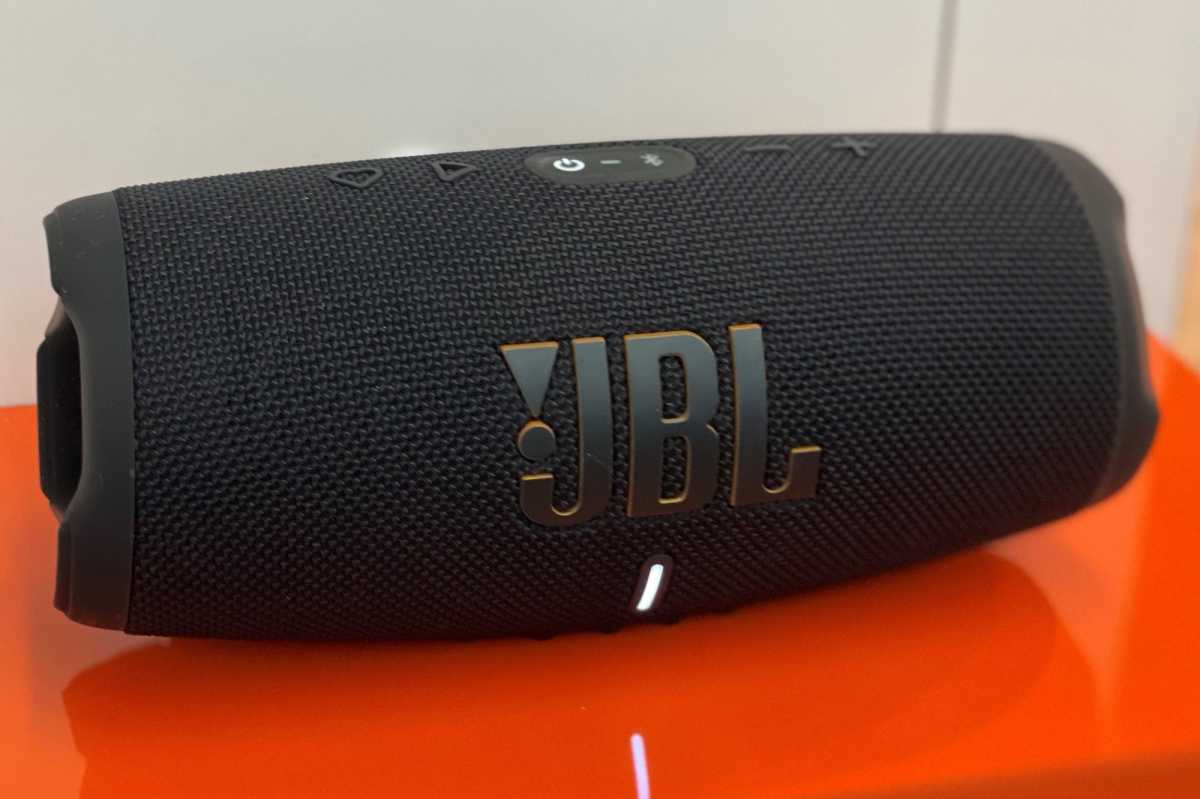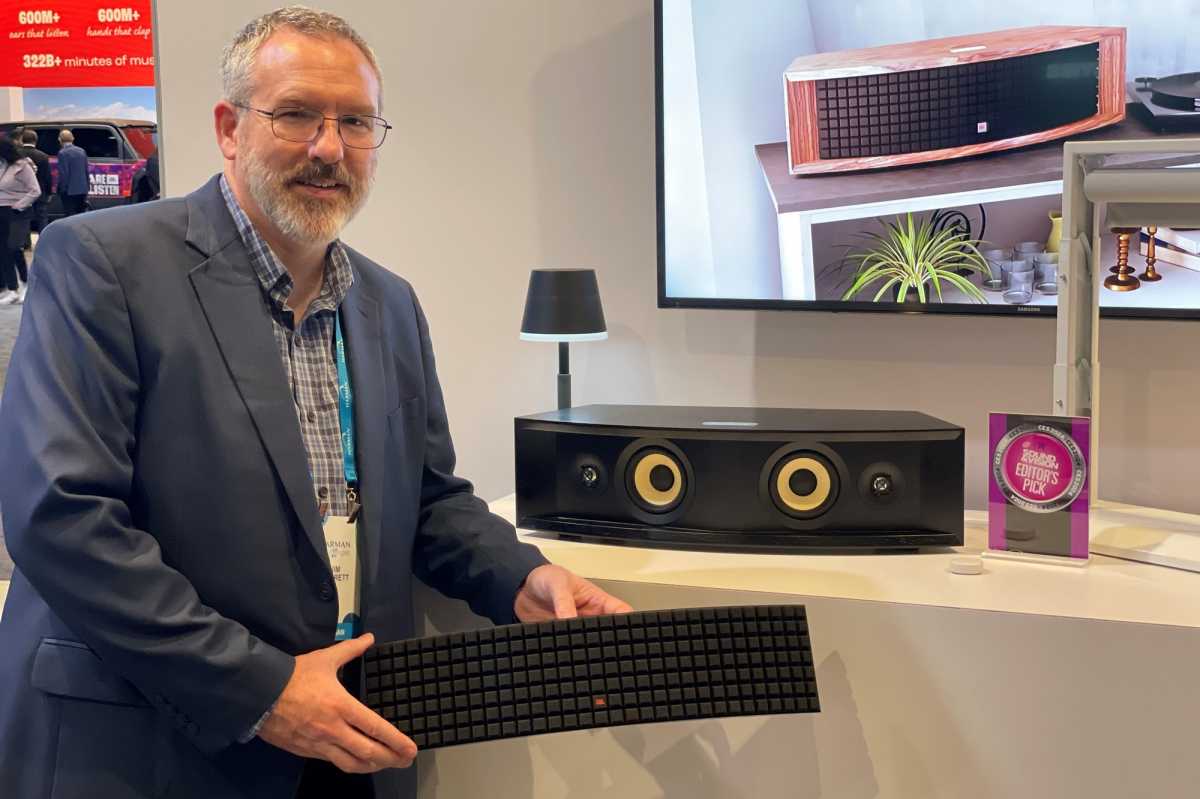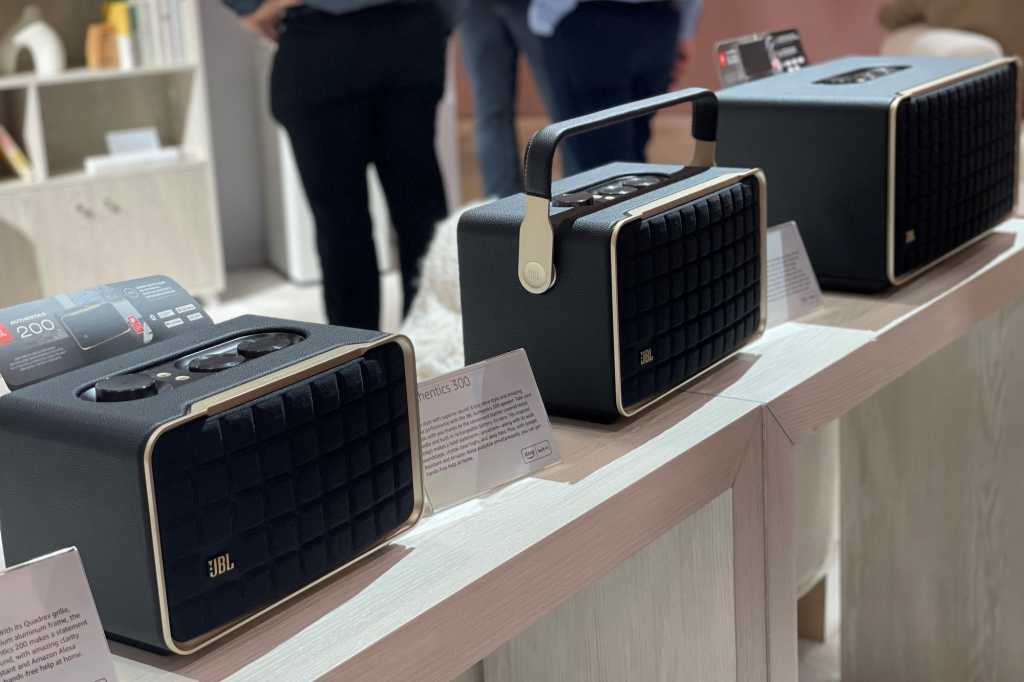Harman Industries, along with its JBL sub brand, had more smart speakers on display at CES last week than any other manufacturer. And they all have one thing in common: The new JBL One app.
Harman’s diverse family of 13 new speakers boasts an industry first: a feature it’s calling “simultaneous voice assistant.” It means you can speak a voice command or query to Amazon Alexa in one breath and to Google Assistant in the next. With competing smart speakers it’s an either/or affair at best. If the speaker supports both agents—and not all do—you must choose during setup which one you want to use.
“If I’m a user, and I have a Ring Doorbell and also use Google services,” said Harman communications exec Dave Glaubke, “I don’t have to get an Echo Dot and a Google Home device. [With these new Harman and JBL smart speakers] it’s all in one.”

Jonathan Takiff/Foundry
The new models are also capable of mixing and mingling in a home theater environment like no other audio series I’ve ever encountered. As demoed by Harman Industries senior UI/UX designer Gigi Guo, you don’t even need to be consistent with your voice commands.
In a test kitchen in a hotel suite off the show floor, fitted with smart lights and shades and a couple of JBL Authentics smart speakers, the software designer asked Alexa to turn on the lights with an “I’m home” command, and a few seconds later, used a Hey Google command to change the lighting scheme to purple. Guo then started a timer with Google Assistant and cancelled it with it a shout-out to Alexa.
Amazon was sufficiently impressed with Harman’s achievement that it showcased JBL Authentics 200, 300, and 500 speakers (priced at $349, $449, and $699 respectively) in its own booth. JBL’s ruggedly handsome, retro-looking entertainers were the only smart speakers to be seen there, apart from Amazon’s own Echo speakers, which answer only to Alexa.
The JBL One app in the home theater
A Harman/JBL home theater display in Harman’s booth was even more impressive. The speaker company showed me an entirely unconventional 5.1-channel surround-sound system made up of its $400 JBL Bar 300 soundbar mounted beneath a TV; a $500 One-app-ready JBL Boombox 3 portable speaker on a credenza beneath the soundbar, functioning as a wireless subwoofer; and two smaller $230 JBL Charge 5 Wi-Fi portables behind me, stage left and right, producing the rear surround channels.
Despite the size, shape, and internal component disparities of these speakers, the racetrack roar and rumble of the Netflix series Formula 1: Drive to Survive soundtrack was remarkably well balanced and explosive as drivers raced around the listening room.

What’s a portable speaker doing in a home theater? Why, performing surround-sound duties, of course.
Jonathan Takiff/Foundry
A Dolby Atmos spatial audio demo was even weirder. The same soundbar was in front; a single Charge 5 Wi-Fi was on the right-hand side of the side of the room, midway down the wall; and a $2,000 JBL Party Box Ultimate was in the back corner of the space. That big bubba of a party speaker boasts forward- and up-firing speakers.
“Because these speakers are all on the same One app platform,” Guo said, “and we know exactly the sound package from each one, we are able to leverage each to [its] best potential. In the past no one would put such speakers together.”
Once you’ve connected your JBL One-app-compatible speakers to your Wi-Fi network, JBL’s app takes charge and does pretty much all the thinking about placement and tuning for you.
“It knows what models you have and suggests which ones to put together,” Guo said. “We have auto calibration, using the microphones built into each speaker, to maximize the balance and performance. Because the Charge 5 Wi-Fi is smaller and sitting alone on the right side” [in the Atmos Spatial Audio demo], “it’s playing more of the surrounding channels to compensate. And with the Party Box Ultimate in the back, it’s capable of up-firing, some surrounding, and we also play a lot of non-directional bass from that.”
When Dolby’s Full 360 Sound demo video came on, I instantly felt transported to the rain forest as birds chirped, insects crackled, and the storm clouds opened up around me. It was genuine sonic wow.
What’s new in JBL Luxury Home Audio

Harman product manager Jim Garrett showing off the new JBL L42ms all-in-one music system at CES.
Jonathan Takiff/Foundry
Harman’s JBL Luxury Home Audio division unveiled the $999 L42ms all-in-one streaming audio system at the show. A downsized, less-expensive version of the recently introduced JBL L75ms TechHive reviewed in September, 2023, it features the same wood veneer and curved front featuring the company’s Quadrex foam grill.
The JBL L42ms offers a host of wired and wireless connectivity options—Bluetooth, Wi-Fi, Chromecast, and Airplay 2—and can function as an endpoint for the exquisite Roon streaming system (Harman acquired Roon in November, 2023). This all-in-one box plays nicely with a bunch of music services and functions well as a TV sound producer via an HDMI Arc connection. It can do some of the same smart-home party tricks as the Authentics—including controlling smart lights and shades—but it triggers them with an-onboard button programmed via the Samsung Smart Things platform.
It is not, however, compatible with the JBL One app—“at least not now,” said Gigi Guo.





